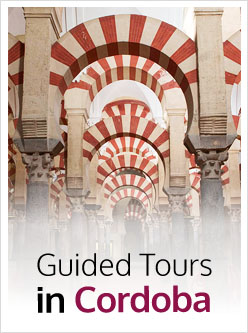Museum of Julio Romero de Torres
The facilities where the Museum of Julio Romero de Torres and the Museum of Fine Arts are located today belonged originally to the old Hospital of Charity. This institution was sponsored by the Catholic Monarchs at the end of the 15th century, and it was run by the Third Order of San Francis, where they looked after the sick until 1837.
Since the middle of the 19th century, the building has experienced numerous reforms, and it has housed several cultural institutions in the city, such as the Archaeological Museum, which was located there between 1868 and 1917, or the Provincial Museum of Fine Arts, and even the house of its curator and director, Rafael Romero Barros, Julio Romero de Torres’s father. This author was born in this building, in the rooms where the museum is today.
When Julio Romero de Torres died on the 10th May 1930, his widow, Francisca Pellicer, and his children, Rafael, Amalia and María, decided not to sell the paintings they still owned, as their first intention was to create a museum with them. The city of Córdoba received from the family, among other things, the canvases presented at the Ibero-American Exhibition held in Seville a year before.
On 23rd November 1931 the Local Museum of Julio Romero de Torres was opened, with the presence of President of the II Republic, Niceto Alcalá Zamora, from the town of Priego de Córdoba. In 1934 the facilities were extended as they acquired some adjacent buildings, and a second floor was added.
With the passage of time, the museum has constantly increased its heritage, starting with the furniture of the studio the painter had in Madrid, which today constitutes the main part of the Private Hall of the museum. On the other hand, the City Council has been acquiring his paintings in the last years, with the aim of increasing and enriching the already very rich collection our city has.
HALLS OF THE MUSEUM
HALL I: Familiar setting
This hall aims at approaching us to the figure of the artist. We can see caricatures, sculptures by the painter and his father (Rafael Romero Barros), works by the latter and portraits of Julio painted by other artists. This hall is also dedicated to posters, as Romero de Torres took part in the famous contemporary school, born in France, which used the poster as a means of communication. Thus he carried out a series of works which fit in the new trend. It was actually his posters which definitely marked the painter’s popularity. This activity was mainly known by Julio Romero de Torres’s participation in different publicity campaigns, basically due to the posters made for Winery Cruz Conde and the Union of Explosives Ríotinto.
HALL II: First period
Julio Romero de Torres’s younger works are characterised by its light. They go through Modernism and Symbolism until reaching Realism, expressed in his landscapes and still lives. In his first period as a painter, Romero de Torres painted several works in line with social painting, with the same style which characterised and defined his beginning.
HALL III: The Chapel
In this hall, the main element is the artist’s most particular and mystic vision. The painter included in his works the classical topics, but in a very personal way, and in many of his works he provided the figures with a mixture of spirituality and sensuality.
HALL IV: The origin of the deep
Julio Romero de Torres’s paintings are but motifs of cante hondo (deep flamenco songs): “a symbol of each copla (popular song)”. His admiration for singing and guitar, and his knowledge on flamenco encouraged him, at the age of 20, to participate in the emerging contest of Cante de las Minasin the town of La Unión in Murcia, where he performed as a singer. The result was not uplifting and Julio Romero de Torres went back to his brushes, but without losing his passion for flamenco, which influenced a great part of his pictorial production. In these works, “el cante” (Flamenco singing) is depicted as a symbol of Andalusian flamenco.
Julio Romero also paid tribute to old female singers and dancers of the time. In many portraits, he included the guitar, as a symbol of his eternal fondness of flamenco in Andalucía, a land of nostalgia and cheerfulness.
HALL V: Resemblance
Julio Romero de Torres was mainly a portrait painter. With more than 500 portraits, he dedicated most of them to women. He painted the aristocracy and the popular classes, people from different social classes, but when he was not limited by the requirements of the job, the painter reached his highest creation skill.
HALL VI: The essence of Córdoba
In this hall, we can appreciate the feeling Julio Romero de Torres had for his homeland. From the distance, he paints his city with nostalgia, the memory of its river, the silence of its squares; its monuments and traditions become the main elements of this series of works, such as “Virgen de los Faroles” (Virgin of the Lanterns), “Ángeles y Fuensanta” (Ángeles and Fuensanta), “Poemas de Córdoba” (Poems of Córdoba), where he remembers old cultures of the city. These works are characterised by dark and gloomy tonalities, a feature which takes us to the last years of the painter, when his palette becomes darker.
UNIQUE WORKS
La chiquita piconera (The Young Girl with the Coal Brazier).
Oil and tempera on canvas.
Size: 100 x 80 cm.
Date: 1930.
It is considered one of his best works and it was painted a few days before dying, and presented at the Ibero-American Exhibition in Seville.
María Teresa López, the beautiful model from Córdoba, was depicted sitting and looking straight to the observer, her knees supporting her relaxed arms. In the background, we can see the sunset through a window, which faces the Paseo de la Ribera Street, as the author wanted to establish a paralled with the decline of his own life.
After some years, this work has become an icon, and it was even reproduced by the Fábrica Nacional de Moneda y Timbre(National Factory of Coins and Stamps) on a 5-peseta stamp.
Naranjas y limones (Oranges and lemons).
Oil and tempera on canvas.
Size: 104 x 70 cm.
Date: 1927.
As in the previous example, this work belongs to his mature years. In this case, the model was Asunción Boué, who had already participated in works like Celos (Jealousy) or Salomé.
Julio Romero de Torres treats still lives in a very personal way, obviously giving the woman a very relevant role. The model is half-naked and she is holding several oranges before her chest, while she is looking directly at the observer, thus providing a strong erotic element.
In the background, the author chose a typical courtyard from Córdoba, where the whiteness of the walls contrasts with the green of the flower pots and the tree, which is actually an orange tree.
¡Mira qué bonita era! (How beautiful she was!).
Oil on canvas.
Size: 148 x 210 cm.
Date: 1895.
With this work Julio Romero de Torres started to be known officially at the National Exhibition in 1895, where he was awarded an honorable mention. The scene that inspired the artist was an event which happened in his youth. In the popular neighbourhood of Santa Marina, a 15-year-old girl died; Julio Romero saw her in her coffin and decided to paint the young dead in a room surrounded by her relatives.
The canvas has the three aspects that would move the author’s spirit more deeply: woman, death and copla (Flamenco song). From the latter, more specifically from a very popular soleá (kind of song), is where the painter took the title for the work: ¡Mira qué bonita era! (How beautiful she was!).
The scene represents a young girl lying dead in her coffin, while her relatives cry around her. Light comes through a window located on the left, from where a young boy is looking inside. Guarding the coffin there are two candles that seem about to be extinguished by the wind coming through the window.
CONTACT
Address: Plaza del Potro, 1. 14002. Córdoba.
Telephone: +34 957 491 909 / +34 957 485 010.
Bus: Lines 3, 4, 7 and 16.Timetable:
- From 16th September to 15th June.
Tuesdays to Fridays: 8:30 to 19:30.
Saturdays: 9:30 to 16:30.
Sundays and Bank Holidays: 9:30 to 14:30.
Mondays closed. - From 16th June to 15th September.
Tuesdays to Saturdays: 8:30 – 14:30.
Sundays and Bank Holidays: 9:30 to 14:30.
Mondays closed.
Price:
- Adults: €4.50.
- Students: 50%.
- Free Admission: Under 18, over65, retired, teachers and disabled.
How to get there:
The Museum of Julio Romero de Torres is located in one of the most symbolic places in the city, in Potro Square, which has existed since the 13th century, when the city was reconquested by Fernando III the Saint. The square can be easily accessed, as it is very close to Paseo de la Ribera, a street that accompanies River Guadalquivir on its way along Córdoba. If we arrive from the city centre, for example from Tendillas Square, we will just have to go through two streets, Claudio Marcelo and San Fernando.
If you wish to know the Museum of Julio Romero de Torres do not hesitate to hire one of our guided tours. We are experts in the interpretation of the historical heritage from Córdoba. We will advise you on tickets, timetable, prices, how to get… If you have chosen to do sightseeing in Córdoba, choose a high quality option, choose ArtenCórdoba.


Choose the tour that best suits your needs and book your place on one of our regular guided tours.
The regular guided tours are those that you can sign up for individually, are conducted regularly and in one language, Spanish or English
Guided Visit Mosque-Cathedral of Cordoba
5 / 5
13€
Guided Visit to the Mosque of Cordoba and the Jewish Quarter
5 / 5
Desde
17€
Guided Tour Cordoba in depth
5 / 5
Desde
40€
Guided Visit Medina Azahara
5 / 5
Desde
18€





























